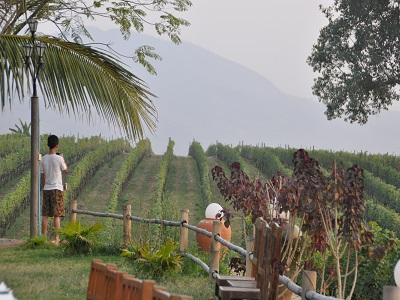
Seven new power plants that are expected to generate more than 1,000 megawatts of additional electricity are being built in Magwe, Shwetaung, Kyunchaung, Ahlone, Kyaukphyu, Thanlyin, and Thaketa, with the aim of fulfilling the projected increase in demand nationwide for electricity during the hot season.
Of the projects, five are being implemented under a tender and two of the projects, a 151.54MW power plant in Ahlone and a 20mw power plant in Kyunchaung being built by Chinese companies.
The other three projects, a 150MW plant in Kyaukphyu, Rakhine State, and a 350MW plant in Thanlyin, and a 400MW plant in Thaketa, both in Yangon Region, will generate electricity with imported liquefied natural gas.
V-Power Co, the Hong Kong-based winner of one of the tenders, work for the power project is on track, with work on infrastructure such as jetties for the docking of LNG-carrying ships, regasification units, pipelines to carry natural gas, and power transmission lines progressing rapidly in Thilawa, Yangon. A 66MW natural gas power plan in Magway has started operating.
The country’s power needs are increasing 15pc to 17pc per year with present power production totalling 3,566 MW. Yangon Region uses 50pc of the total at 1,436 MW and Mandalay Region comes second with over 500 MW. Minister of Electricity and Energy said power demand is expected to rise by 1,500 MW 2019-2020.
Source: Myanmar Times





 The Agriculture, Livestock and Irrigation Ministry has linked up with ActionAid Myanmar to carry out seed production and help businesses in central plain tropical zone and Ayeyarwady Deltaadapt and ensure climate change.”We will mainly carry out seed production and agricultural techniques in Ayeyarwady Delta and tropical zone by inviting experts from ActionAid and exchanging technology with them”, ” said U Ye Tint Tun, director general of the ministry’s Department of Agricultural.
The Agriculture, Livestock and Irrigation Ministry has linked up with ActionAid Myanmar to carry out seed production and help businesses in central plain tropical zone and Ayeyarwady Deltaadapt and ensure climate change.”We will mainly carry out seed production and agricultural techniques in Ayeyarwady Delta and tropical zone by inviting experts from ActionAid and exchanging technology with them”, ” said U Ye Tint Tun, director general of the ministry’s Department of Agricultural. Chaung
Chaung Myanmar shipped over 100,000 tons of corn to other countries during October-November in the current financial year compared to 200,000 tons in the year-ago period .As China is the major purchaser of Myanmar corn, the price is positively related to demand from the neighboring country.
Myanmar shipped over 100,000 tons of corn to other countries during October-November in the current financial year compared to 200,000 tons in the year-ago period .As China is the major purchaser of Myanmar corn, the price is positively related to demand from the neighboring country. It’s common to see roads in Shan State full of trucks loaded with vegetables. The state produces 60 percent of all vegetables consumed within the country.Some of the crops are even exported to neighbouring countries.The state government now says that it is making moves to place more emphasis on developing agriculture over tourism as Shan has the potential to become an agricultural powerhouse in Myanmar and the region.
It’s common to see roads in Shan State full of trucks loaded with vegetables. The state produces 60 percent of all vegetables consumed within the country.Some of the crops are even exported to neighbouring countries.The state government now says that it is making moves to place more emphasis on developing agriculture over tourism as Shan has the potential to become an agricultural powerhouse in Myanmar and the region. Sugarcane crushing, which normally starts every November in sugar mills in Myanmar, will be postponed to December this year, an industry insider has revealed. Sugar prices have been dropping over the last year even uncommon weather conditions have delayed the harvesting of sugarcane. This has led to the postponement of the crushing process by a month.
Sugarcane crushing, which normally starts every November in sugar mills in Myanmar, will be postponed to December this year, an industry insider has revealed. Sugar prices have been dropping over the last year even uncommon weather conditions have delayed the harvesting of sugarcane. This has led to the postponement of the crushing process by a month. Although a new pipeline for the Zawtika natural gas field is urgently needed, work on the project is expected to only begin next year 2020, due to negotiations over the cost of the project, officials say. The cost for the new pipeline is supposed to come from revenue generated for the Myanmar Oil and Gas Enterprise (MOGE) by the current Kanpauk-Myaing Kalay pipeline that transfers natural gas from the Zawtika field for local use. The Zawtika M9 block is being worked as a 80/20 joint venture by Thailand’s PTT Exploration and Production Public Co Ltd and MOGE.
Although a new pipeline for the Zawtika natural gas field is urgently needed, work on the project is expected to only begin next year 2020, due to negotiations over the cost of the project, officials say. The cost for the new pipeline is supposed to come from revenue generated for the Myanmar Oil and Gas Enterprise (MOGE) by the current Kanpauk-Myaing Kalay pipeline that transfers natural gas from the Zawtika field for local use. The Zawtika M9 block is being worked as a 80/20 joint venture by Thailand’s PTT Exploration and Production Public Co Ltd and MOGE.